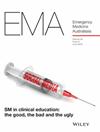Children with non-accidental injuries have increased risk of future death. There is insufficient evidence for widespread physical abuse screening tool use in the ED. This study assesses the utility of a physical abuse project that includes the implementation of a screening tool with case-matching from multiple sources. It aims to confirm whether risk-screening in a medium-sized rural Australian ED is reliable and will improve outcomes.
This is a 16-month ED retrospective pre-/post-implementation study of all injury, burn or poisoning cases 16 years and under during a paediatric physical abuse safety project which included a screening tool. Presentations with potential physical abuse were filtered by ICD-10 codes and reviewed. Multivariable logistic regression models compared pre- and post-implementation cases. Analyses examined outcomes, trends and interrogated the screening tool which formed a Clinical Pathway Algorithm (CPA).
A total of 1469 presentations underwent investigation: 747 pre-implementation and 722 post-implementation. Pearson's χ2 test showed statistically insignificant differences. If tool used, documentation improved (odds ratio [OR] 7.73; 95% confidence interval [CI] 4.91–12.18), child protection service referrals increased (OR 5.50; 95% CI 1.82–16.61) and hospital admissions decreased (OR 0.42; 95% CI 0.22–0.79). Re-presentation rates stayed the same. Increased physical abuse was associated with screening factors including carer behavioural concerns, inadequate supervision, delayed presentation, repeat and unexplained injuries (ORs/CIs in an accompanying Table 4). Screening tool sensitivity was 62.3% and specificity 79.7%.
Implementing this ED paediatric physical abuse project improved safety behaviours and best-practice documentation. The tool improved medical decision making without increased re-presentations. ED clinicians may use similar CPAs to help review safety concerns and facilitate discharge; however, resources are needed to investigate referrals flagged due to false-positive rates.



